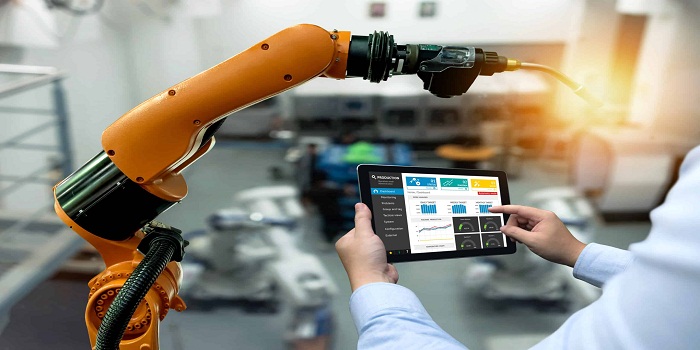In today’s rapidly evolving business landscape, tech revolutionizes business trends. Which plays a pivotal role in shaping trends and driving innovation. From streamlining communication to enhancing customer experiences, businesses are leveraging technology to stay competitive and adapt to changing market dynamics. Let’s explore five key ways technology is revolutionizing business trends.
Table of contents
Streamlined Communication
Efficient communication is the backbone of any successful business operation. With technological advancements, communication has become faster, more accessible, and seamless. Instant messaging platforms like Slack and Microsoft Teams have replaced traditional emails. Allowing teams to collaborate in real-time, irrespective of their geographical locations. Moreover, video conferencing tools such as Zoom and Google Meet. They have facilitated face-to-face interactions, enabling teams to conduct meetings, presentations, and training sessions remotely.

| Communication | Traditional Methods | Technological Advancements |
| Speed | Communication via postal mail or fax could take days or weeks. | Instant messaging platforms like Slack and Microsoft Teams enable real-time communication, allowing for immediate responses and faster decision-making. |
| Accessibility | Limited access to communication tools, especially for remote or mobile employees. | Technological advancements have made communication tools more accessible, with mobile apps and cloud-based platforms allowing employees to stay connected from anywhere with internet access. |
| Collaboration | Collaboration often limited to in-person meetings or lengthy email threads. | Instant messaging platforms facilitate seamless collaboration, enabling teams to share files, discuss ideas, and work together on projects in real-time. |
| Interaction | Face-to-face meetings required physical presence, limiting interactions between geographically dispersed teams. | Video conferencing tools like Zoom and Google Meet enable face-to-face interactions regardless of geographical locations, fostering a sense of connection and engagement among team members. |
| Efficiency | Communication processes often slow and cumbersome, leading to delays in decision-making and project progress. | Technological advancements in communication tools have streamlined processes, allowing for quicker exchanges of information, more efficient collaboration, and ultimately, increased productivity. |
Data Analytics for Informed Decision-Making
Data has emerged as a valuable asset for businesses, providing insights into market trends, customer preferences, and competitor strategies. Through sophisticated data analytics tools, businesses can harness large volumes of data to make informed decisions. Predictive analytics algorithms forecast future trends, enabling businesses to anticipate market demands and adapt their strategies accordingly.

Automation of Processes
Automation has revolutionized traditional business processes, increasing efficiency, reducing costs, and minimizing errors. Robotic Process Automation (RPA) software automates repetitive tasks. Such as data entry and invoice processing, freeing up employees to focus on more strategic initiatives.
- Efficiency Boost: Automation streamlines repetitive tasks, completing them at a much faster pace than human workers, thereby increasing overall productivity.
- Cost Reduction: By automating processes, businesses can significantly reduce labor costs associated with manual tasks, leading to substantial savings over time.
- Error Minimization: RPA software operates with precision and consistency, drastically reducing the likelihood of human error in routine tasks, thus enhancing accuracy and reliability.
- Employee Empowerment: Automation frees up employees from mundane and repetitive tasks, allowing them to focus on more strategic and creative initiatives that add greater value to the business.
- Enhanced Compliance: RPA ensures adherence to regulatory standards and compliance requirements by consistently executing processes according to predefined rules and protocols.
- Scalability: Automation can easily scale up or down to accommodate fluctuations in workload or business demands without the need for significant infrastructure or resource adjustments.
- Improved Customer Experience: With automation handling routine tasks efficiently, employees have more time to dedicate to customer service and engagement, leading to a better overall experience for clients and customers.

Enhanced Customer Experience
In today’s competitive market, delivering exceptional customer experiences is paramount for business success. Technology enables businesses to offer personalized and seamless interactions throughout the customer journey. Through data-driven insights, businesses can personalize their offerings based on individual preferences, improving customer satisfaction and loyalty. Moreover, the integration of chatbots and virtual assistants streamlines customer support, providing quick responses and solutions round the clock.

Global Reach and Market Expansion
The advent of technology has transcended geographical barriers, enabling businesses to reach global markets and expand their customer base. E-commerce platforms offer businesses a digital storefront to showcase their products and services to a global audience, facilitating international sales and distribution.
Additionally, digital marketing strategies, such as social media advertising and search engine optimization (SEO), help businesses increase their online visibility and attract customers from diverse demographics.
- E-commerce Revolution: With the rise of e-commerce platforms, businesses now have the capability to transcend geographical limitations. These platforms provide a digital marketplace where businesses can showcase their offerings to a global audience
- Digital Marketing Dynamics: Digital marketing strategies play a pivotal role in enabling businesses to expand their reach. Social media advertising allows companies to target specific demographics across the globe, increasing brand awareness and driving sales
- Cultural Adaptation and Localization: Successful global expansion requires businesses to adapt to diverse cultural norms and preferences. By localizing marketing campaigns, products, and services, companies can effectively resonate with international audiences. .
- Market Research and Analytics: Leveraging advanced analytics tools, businesses can gain valuable insights into global markets, consumer behavior, and emerging trends. By conducting comprehensive market research, companies can identify lucrative opportunities and tailor their strategies accordingly. This data-driven approach enables businesses to make informed decisions, mitigating risks and maximizing profitability in the global arena

Conclusion
Tech revolutionizes business trends that are continues to redefine the way businesses operate and interact with their customers. From streamlining communication to expanding market reach, technology-driven innovations are reshaping business trends and creating new opportunities for growth and innovation. By embracing technological advancements and staying abreast of emerging trends, businesses can stay competitive and thrive in today’s dynamic business environment.
Read More 5 ways Tech is Revolutionizing Business Trends
FAQs
Technology enables real-time communication through instant messaging and video conferencing tools, facilitating collaboration among teams irrespective of their locations.
Data analytics provides valuable insights into market trends and customer behavior, enabling businesses to make informed decisions and tailor their strategies accordingly.
Automation streamlines repetitive tasks, reduces costs, and minimizes errors, enhancing efficiency and productivity within organizations.
Technology enables personalized interactions and round-the-clock support through chatbots and virtual assistants, enhancing customer satisfaction and loyalty.

